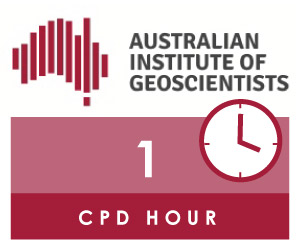| |

Tuesday 18th July 2017
Nibblies from 6.30pm, Presentation 7.10pm (approx.)
The Kelvin Club
14-30 Melbourne Pl, Melbourne (See map)
S. Micklethwaite, S. Thiele, J. Sissins, A. Spek, T. Drummond, S. Vollgger
Unmanned Aerial Vehicles (UAVs), Computer Vision and Artificial Intelligence have the potential to transform daily working practice for field mapping, geophysical and remote sensing surveys, drill core logging, geoscience data interpretation and even sample collection. The pace of technological advance is dazzling and the geosciences and exploration industry have been slow to take full advantage. In this keynote we introduce best practise in the use of inexpensive, off-the-shelf drones and Structure-from-Motion photogrammetry, which can reproduce very high resolution (mm-cm scale) 3D digital models of outcrops, open pits and mine faces. The question that then naturally arises is how do we make full use of such large datasets? We deliver two advances that demonstrate what is possible;
Finally, looking to the near future, we touch on the range of sensors being developed for UAVs, including high resolution aeromagnetic and gravity surveys by UAV. Again, there is potential that artificial intelligence techniques will greatly accelerate our ability to interpret mine face, drill core and regional geophysical datasets, but these developments must be led by the end-users of the tools.
Steven Micklethwaite has mapped and worked alongside exploration teams on 5 different continents. He is currently Assoc.Prof. in the School of Earth, Atmosphere and Environment at Monash University where he is establishing the Centre for Resource Science and Technology (CReST). CReST will be an interdisciplinary and cross-institute initiative, supporting the resources industry across the full mining workflow. He held previous positions at the Australian National University, as well as Australia’s two leading minerals exploration research centres at the universities of Tasmania and Western Australia. Steven is also examining the trapping and release of precious metals from sulphides and pioneering the application of drones and artificial intelligence to solve problems for exploration, production, remediation and pit stability.
To support our Victorian Branch and ongoing future events we kindly ask for a small admission fee from our attendees – $10 Members, $15 Non-Members, Students Free.
Download the event flyer.
Steven Williamson steve@stevenwilliamson.com.au
Rodney Boucher rodney@linex.com.au